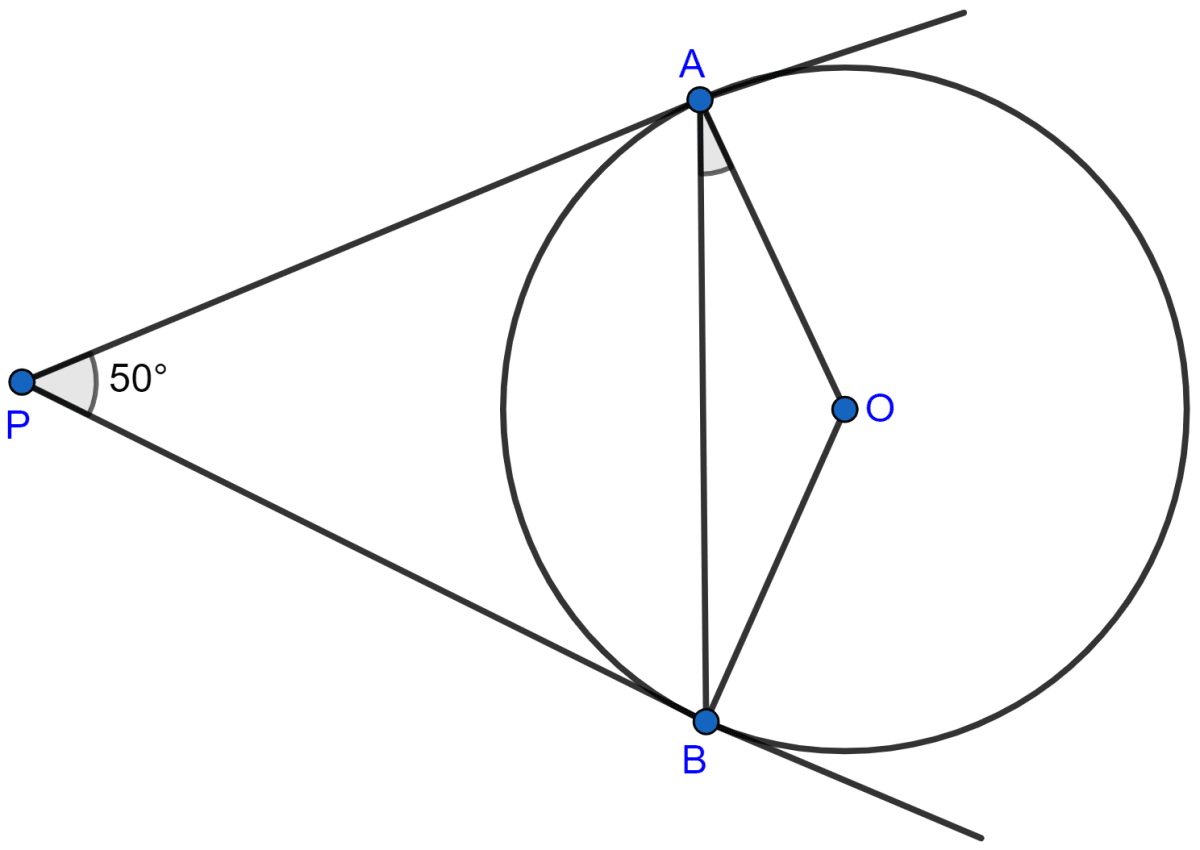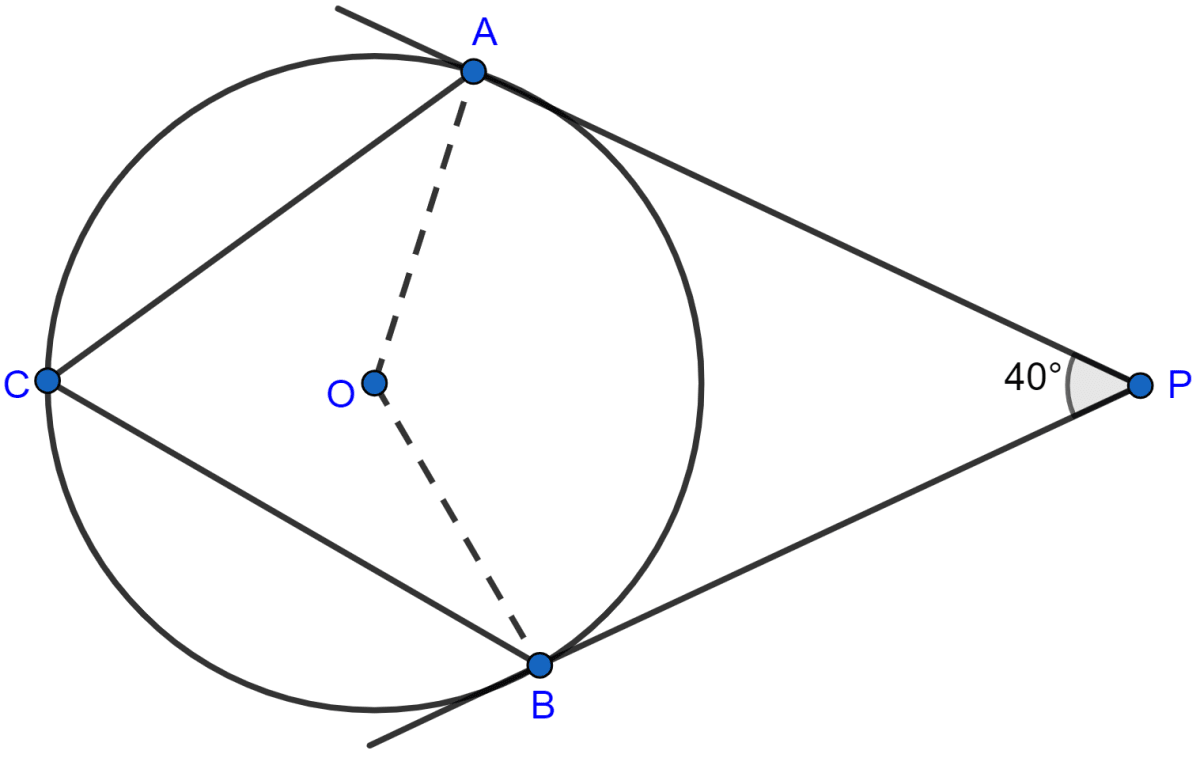Mathematics
PQ is a tangent to a circle at point P. Centre of circle is O. If △OPQ is an isosceles triangle, then ∠QOP is equal to
30°
60°
45°
90°
Circles
2 Likes
Answer
The circle with centre O and PQ as tangent is shown in the figure below:

We know that,
OP ⊥ PQ (∵ tangent through a point and radius from that point are perpendicular to each other)
Given, △OPQ is an isosceles triangle.
Since, ∠OPQ = 90° hence, the other two angles will be equal to each other.
∴ ∠QOP = ∠OQP
We know that sum of angles in a triangle = 180°.
In △OPQ,
⇒ ∠OPQ + ∠QOP + ∠OQP = 180°
⇒ ∠OPQ + ∠QOP + ∠QOP = 180°
⇒ 90° + 2∠QOP = 180°
⇒ 2∠QOP = 180° - 90
⇒ ∠QOP =
⇒ ∠QOP = 45°.
Hence, Option 3 is the correct option.
Answered By
2 Likes
Related Questions
In the adjoining figure, sides BC, CA and AB of △ABC touch a circle at point D, E and F respectively. If BD = 4 cm, DC = 3 cm and CA = 8 cm, then the length of side AB is
12 cm
11 cm
10 cm
9 cm

In the adjoining figure, sides BC, CA and AB of △ABC touch a circle at the points P, Q and R respectively. If PC = 5 cm, AR = 4 cm and RB = 6 cm, then the perimeter of △ABC is
60 cm
45 cm
30 cm
15 cm

In the adjoining figure, PA and PB are tangents at points A and B respectively to a circle with centre O. If C is a point on the circle and ∠APB = 40°, then ∠ACB is equal to
80°
70°
90°
140°

In the adjoining figure, two circles touch each other at A. BC and AP are common tangents to these circles. If BP = 3.8 cm, then the length of BC is equal to
7.6 cm
1.9 cm
11.4 cm
5.7 cm
